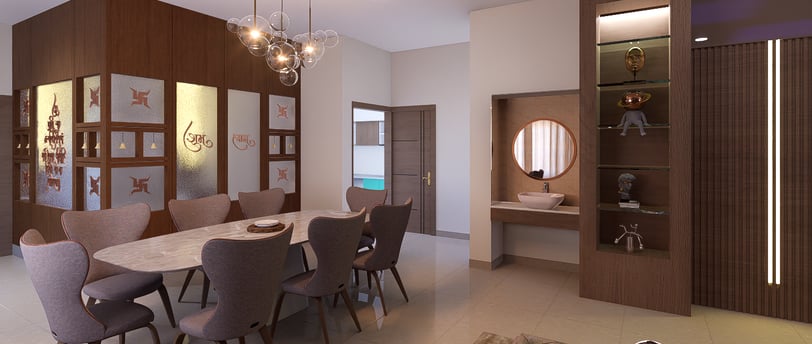Some Tips for a Successful Interior Project
Ar. Nitin K Shrivastava & Ar. Monika Shrivastava
2 min read


1. Start with a Clear Vision
Before diving into the project, define the purpose, style, and mood you want for the space.
Gather inspiration from various sources (Pinterest, magazines, etc.) and create a vision board to stay focused on your goals.
2. Set a Realistic Budget
Determine a budget for your project, including a buffer for unexpected costs.
Break down the budget into categories (furniture, décor, materials, labor, etc.) to stay on track.
3. Choose the Right Professionals
Hire experienced professionals, such as interior designers, contractors, and suppliers, who align with your vision and style.
Collaborate closely with them to ensure your expectations are understood and met.
4. Focus on Functionality
Make sure the space works for your needs. Consider flow, traffic patterns, and how the space will be used daily.
Prioritize practical elements, such as storage and layout, before moving on to aesthetics.
5. Select a Cohesive Color Scheme
Choose a color palette that complements the purpose and mood of the space.
Use neutral base colors and add accent colors through accessories, art, or statement furniture.
6. Balance Trends with Timeless Design
Incorporate trendy elements in accessories or easily replaceable items while focusing on classic design choices for larger, long-lasting pieces like sofas, cabinetry, or flooring.
7. Invest in Quality Materials
Choose durable, high-quality materials that will stand the test of time, especially for high-traffic areas and key furniture pieces.
Don’t sacrifice quality for cost, as it may lead to more expensive repairs or replacements in the future.
8. Lighting is Key
Layer lighting through a combination of natural light, ambient lighting (ceiling fixtures), task lighting (desk lamps), and accent lighting (sconces, floor lamps) to create depth and warmth in the space.
Make sure lighting suits both practical needs and enhances the overall ambiance.
9. Pay Attention to Details
Small details like hardware, trims, finishes, and textiles can make a big impact on the final look.
Incorporate textures, patterns, and accessories to add depth and character to the space.
10. Keep the Project Organized
Maintain an organized schedule and checklist to track progress and stay on top of timelines.
Communicate regularly with your team to avoid missteps or delays.
11. Measure Everything
Take accurate measurements of your space and furniture before purchasing any items to ensure proper fit and functionality.
Double-check that doors, walkways, and windows are considered in layout decisions.
12. Adapt and Be Flexible
Be open to changes as unexpected challenges may arise. Flexibility will help you make better decisions when things don’t go as planned.
Stay focused on your end goal while being adaptable during the process.
13. Sustainability Matters
Consider sustainable materials, energy-efficient appliances, and eco-friendly practices.
Incorporating green design principles can enhance both the aesthetic and functionality of your space while being environmentally responsible.
14. Test Before Committing
Before making significant changes, such as painting walls or purchasing large furniture, test samples (e.g., color swatches or fabric) in your space to ensure they fit your vision.
15. Enjoy the Process
Interior projects can be stressful, but also incredibly rewarding. Take time to enjoy the creative process and celebrate milestones along the way.
By following these tips, you'll have a structured and successful interior project that reflects your vision and maximizes both functionality and style.


